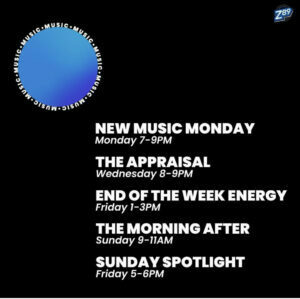Amid Taylor Swift Debate, Charlie Puth Explains Why Some Songs Sound Alike: ‘Stop Demonizing This’
As TikTokers argue over whether Taylor Swift’s new songs sound like old classics, Charlie Puth is taking to social media to explain how songwriting actually works — telling fans that “there’s only 12 notes in a scale” and people need to “stop demonizing” similar songs.
The singer’s explainer video, posted to TikTok, came amid a week-long internet debate over several songs from Swift’s new album The Life of a Showgirl, including claims that her “Wood” borrowed too much of its sound from “I Want You Back” by The Jackson 5.
Puth never mentions Swift or her new album by name, but says he made the video because “lately there’s been a lot of discussion about when two songs have similar melodies.”
“There’s only 12 notes in a scale,” Puth reminded fans, counting them out on a keyboard. “So when you’re writing a new song, there are bound to be similarities to an old song.”
Puth’s video centers on the issue of interpolation — the intentional use of existing musical elements from an earlier song when writing a new one. It’s sometimes confused with sampling, which involves adding an actual snippet of a sound recording into a new one.
According to Puth, similarities between two melodies only become full-scale interpolation when they reach five consecutive identical notes. Below that mark, he says a string of the same notes is just that — a common musical tool from a shared cultural tool set that doesn’t need to be credited or licensed.
To make the point, he compared a Fifth Harmony song to a Hailee Steinfeld song, pointing out that they start with four identical notes but then split in different sonic directions: “So in this case, no interpolation!” Puth said. He then contrasted that with the Portugal. The Man hit “Feel It Still,” which borrowed amply from a 1960s R&B song — and credits it as such. “In that case, interpolation,” he said.
While Puth’s video offers valuable insight into industry practice from the perspective of a prolific songwriter, it doesn’t exactly track actual copyright law, which governs when one artist must pay for and credit the use of existing material. There is no hard-and-fast rule for the number of notes that constitutes infringement, and courts typically weigh a broader analysis, including similarities in other musical elements and whether the original song is even unique enough to warrant copyright protection.
Finding that actual legal dividing line is much harder than Puth makes it out to be. In 2015, a federal jury found that Robin Thicke and Pharrell’s “Blurred Lines” had infringed Marvin Gaye’s “Got To Give It Up” — a verdict widely seen as making it easier to sue over similar-sounding songs. But in a 2022 decision, an appeals court cleared Katy Perry of lifting a portion of her “Dark Horse” from an earlier track, ruling that artists must be free to reuse common musical phrases.
Faced with that uncertainty, many artists, songwriters and record labels simply err on the side of caution, offering interpolation licenses and credits in any situation that is even legally debatable. That’s why Olivia Rodrigo credited Paramore on her “Good 4 U”, and why Sam Smith decided to add a credit to his “Stay With Me” over similarities with Tom Petty‘s 1989 song “I Won’t Back Down.”
In Swift’s case, comparisons of “Wood” and “I Want You Back” have drawn the most debate. But internet sleuths have also scrutinized the overlap between “The Life of a Showgirl” and “Cool” by the Jonas Brothers, and “Actually Romantic” and “Where Is My Mind” by the Pixies. (The album’s “Father Figure” is an outright interpolation of George Michael’s 1988 hit of the same name approved by the late singer’s estate.)
Contrary to the clear-cut analysis explained in Puth’s video, whether any of those songs actually required an interpolation license or a credit from Swift is a question that only a federal court could decide after years of litigation. None of the artists behind the debated songs have publicly threatened such a lawsuit against her, or even mentioned the similarities.
For years, veteran songwriters like Ed Sheeran have chafed at how similar-sounding songs are reflexively treated as theft. Copyright lawsuits over such situations have proliferated over the past decade, targeting Dua Lipa, Miley Cyrus and Sheeran several times. And the rush to litigation is no doubt fueled by how the issue is debated on social media and sites like YouTube, where mashup videos posted by non-experts often imply legal wrongdoing.
“There’s only so many notes and very few chords used in pop music,” Sheeran said back in 2022 after beating one such case. “Coincidence is bound to happen if 60,000 songs are being released every day on Spotify. That’s 22 million songs a year and there’s only 12 notes that are available.”
In his video this week, Puth echoes those same sentiments. Though he doesn’t dive into the legal specifics of when licenses are needed, he argues more broadly that good-faith overlap is inevitable in modern music and should not be viewed as intentional copying or theft.
“If I could just take a moment and say this: Sometimes artists will accidentally interpolate each other, and it’s almost never done maliciously,” Puth says in the TikTok video. “We have to really stop demonizing this when it happens. Interpolations and sampling, this stuff has been going on for a really long time, and some great music has come about because of it.”

Powered by Billboard.






